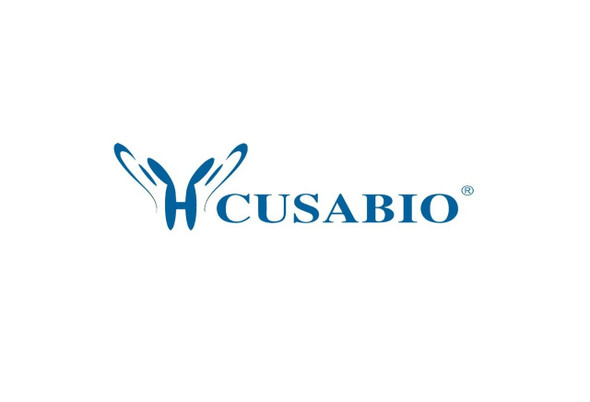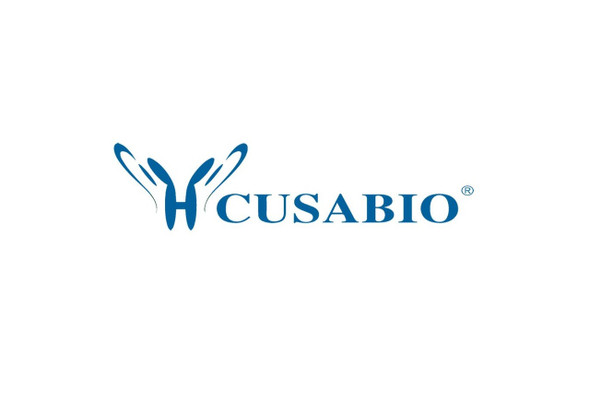Cusabio Human Recombinants
Recombinant Human Phospholipid scramblase 1 (PLSCR1) | CSB-EP018207HU
- SKU:
- CSB-EP018207HU
- Availability:
- 13 - 23 Working Days
Description
Recombinant Human Phospholipid scramblase 1 (PLSCR1) | CSB-EP018207HU | Cusabio
Alternative Name(s): Ca(2+)-dependent phospholipid scramblase 1 Erythrocyte phospholipid scramblase MmTRA1b
Gene Names: PLSCR1
Research Areas: Microbiology
Organism: Homo sapiens (Human)
AA Sequence: ESTGSQEQKSGVW
Source: E.coli
Tag Info: N-terminal GST-tagged
Expression Region: 1-318aa
Sequence Info: Full Length
MW: 28.4 kDa
Purity: Greater than 90% as determined by SDS-PAGE.
Relevance: May mediate accelerated ATP-independent bidirectional transbilayer migration of phospholipids upon binding calcium ions that results in a loss of phospholipid asymmetry in the plasma membrane. May play a central role in the initiation of fibrin clot formation, in the activation of mast cells and in the recognition of apoptotic and injured cells by the reticuloendothelial system. May play a role in the antiviral response of interferon (IFN) by amplifying and enhancing the IFN response through increased expression of select subset of potent antiviral genes. May contribute to cytokine-regulated cell proliferation and differentiation.
Reference: "Isolation of an erythrocyte membrane protein that mediates Ca2+-dependent transbilayer movement of phospholipid." Basse F., Stout J.G., Sims P.J., Wiedmer T. J. Biol. Chem. 271:17205-17210(1996)
Storage: The shelf life is related to many factors, storage state, buffer ingredients, storage temperature and the stability of the protein itself. Generally, the shelf life of liquid form is 6 months at -20?/-80?. The shelf life of lyophilized form is 12 months at -20?/-80?.
Notes: Repeated freezing and thawing is not recommended. Store working aliquots at 4? for up to one week.
Function: May mediate accelerated ATP-independent bidirectional transbilayer migration of phospholipids upon binding calcium ions that results in a loss of phospholipid asymmetry in the plasma membrane. May play a central role in the initiation of fibrin clot formation, in the activation of mast cells and in the recognition of apoptotic and injured cells by the reticuloendothelial system.; FUNCTION
Involvement in disease:
Subcellular Location: Cell membrane, Single-pass type II membrane protein, Membrane, Lipid-anchor, Cytoplasmic side, Nucleus
Protein Families: Phospholipid scramblase family
Tissue Specificity: Expressed in platelets, erythrocyte membranes, lymphocytes, spleen, thymus, prostate, testis, uterus, intestine, colon, heart, placenta, lung, liver, kidney and pancreas. Not detected in brain and skeletal muscle.
Paythway:
Form: Liquid or Lyophilized powder
Buffer: If the delivery form is liquid, the default storage buffer is Tris/PBS-based buffer, 5%-50% glycerol. If the delivery form is lyophilized powder, the buffer before lyophilization is Tris/PBS-based buffer, 6% Trehalose, pH 8.0.
Reconstitution: We recommend that this vial be briefly centrifuged prior to opening to bring the contents to the bottom. Please reconstitute protein in deionized sterile water to a concentration of 0.1-1.0 mg/mL.We recommend to add 5-50% of glycerol (final concentration) and aliquot for long-term storage at -20?/-80?. Our default final concentration of glycerol is 50%. Customers could use it as reference.
Uniprot ID: O15162
HGNC Database Link: HGNC
UniGene Database Link: UniGene
KEGG Database Link: KEGG
STRING Database Link: STRING
OMIM Database Link: OMIM










